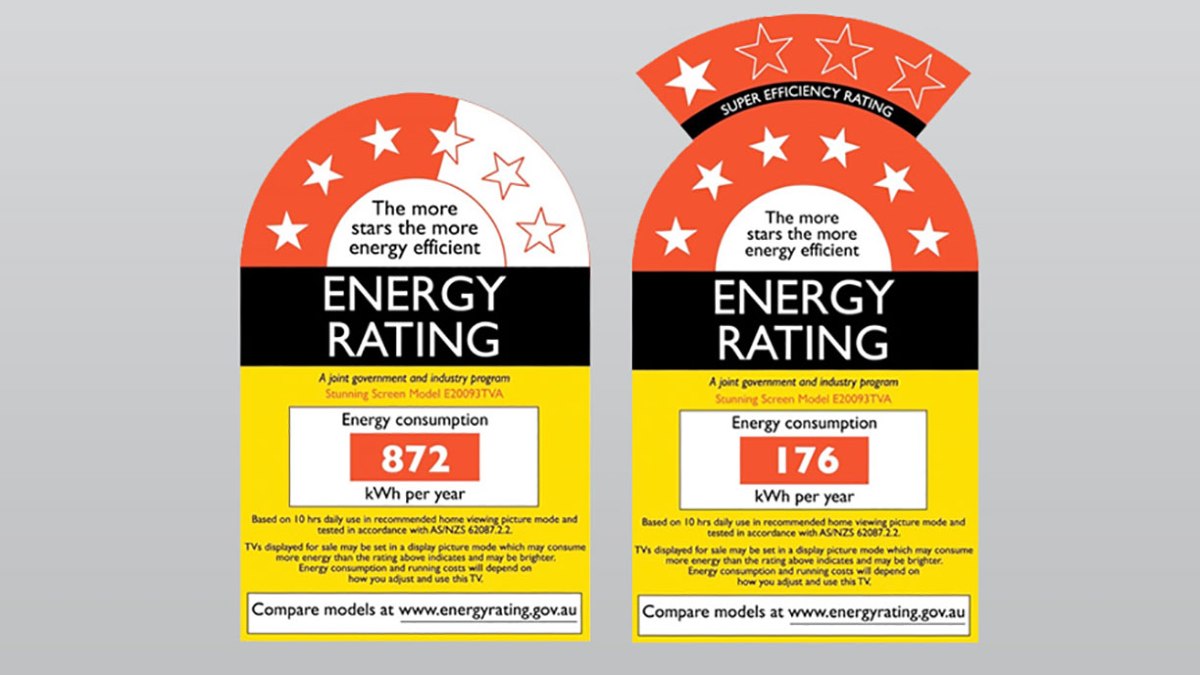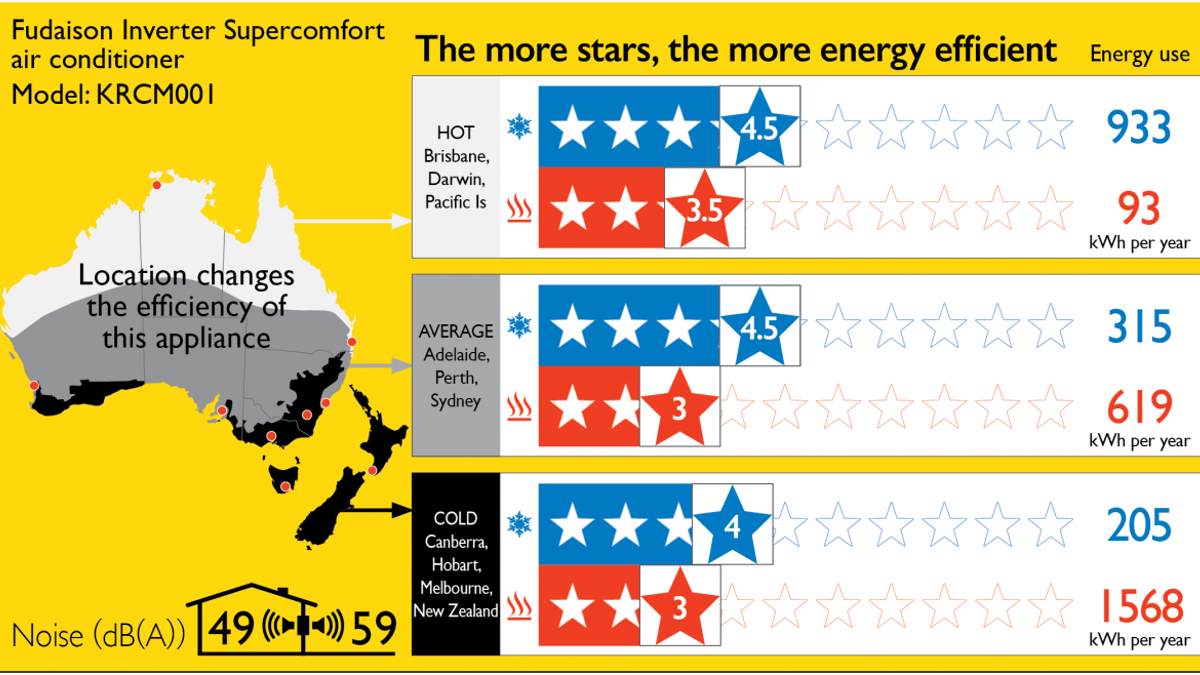Australians have fallen in love with air fryers. Discover how they work, their energy efficiency, what to avoid and which type is best for you.
Understanding energy star ratings on appliances

Thinking of purchasing or upgrading your fridge, washing machine, or another appliance? Here’s how to read Energy Rating Labels so you understand just how energy efficient common household appliances are.
Enhance your energy efficiency and save money on energy next time you purchase an appliance with one simple trick: by checking its Energy Rating Label. These are the red, black and yellow stickers you will see on white goods and other household appliances.
Energy Rating Labels show you how energy efficient an appliance is, and how much energy the appliance will consume in a year, to help you compare models.
- The more stars on the label, the better the appliance’s energy performance.
- The lower the energy consumption figure, the less power the appliance consumes.
The Australian Government regulates Energy Rating Labels through its Equipment Energy Efficiency (E3) program, which is administered by the Department of Industry, Science, Energy and Resources (DISER).
Which appliances have Energy Rating Labels?
It’s mandatory to display Energy Rating Labels on the following appliances in retail stores:
- Refrigerators
- Freezers
- Clothes washers
- Clothes dryers
- Dishwashers
- Air conditioners (single phase, non-ducted)
- Televisions
- Computer monitors.
It isn’t mandatory to display Energy Rating Label information on the same appliances when they’re sold online. However, consumers often want this information, so most retailers choose to display energy ratings online too.
How are Energy Rating Labels read?
There are two important pieces of information on Energy Rating Labels: the efficiency star rating and the energy consumption figure.

Energy Rating Labels can display six stars or ten stars, but they are all rated out of ten.
Star Ratings
Appliances are given a star rating from 1 to 10, with 10 stars being the most energy efficient.
"In general terms, products that achieve 1 to 6 stars are efficient, while those achieving 7 to 10 stars are considered to be super-efficient," said a spokesperson for DISER. "The rule of thumb is the more stars, the more efficient the appliance or product."
Energy efficient appliances require less electricity to achieve the same level of performance as similar models. That means the appliance will use less electricity, costing you less on your next energy bill.
There are two types of labels: 6 Star and 10 Star.
- Appliances with a rating of 6 stars or fewer will be displayed on a six-star label using half-star increments. Don’t be fooled: 6 full stars on this label is still a rating of 6/10, not 6/6.
- Appliances with a rating of 7 stars or more will show the additional stars in a band above the regular six-star label, and may not use half-star increments.
How are Star Ratings calculated?
Star ratings are worked out differently for each appliance. Algorithms calculate how much output an appliance produces per unit of energy it consumes. ‘Output’ could mean area of screen size for a television, or amount of cooling capacity for an air conditioner.
It’s also important to remember that star ratings compare models of a similar size or capacity. For example, a fridge’s star rating will be a comparison to other fridges of a similar litreage, rather than to all fridges.
Energy Consumption Figures
An appliance’s energy consumption figure estimates how much energy (in kilowatt-hours, or kWh) that the appliance will use in one year with average usage. By examining this part of the Energy Rating Label, you can estimate how much it will cost you to run the appliance.
How are Energy Consumption Figures calculated?
The following usage assumptions have been used to calculate energy consumption figures:
Televisions & computer monitors = 10 hours use + 14 hours standby per day
Fridges & freezers = 24 hours per day
Dishwashers = 7 uses per week using the ‘Normal’ setting
Clothes washers = 7 uses per week using a warm wash
Clothes dryers = 1 full load per week.
Your appliance’s actual energy consumption will depend on how often and how much it’s used compared to the above usage assumptions.
ZERLs on air conditioners
External factors like climate can also affect energy consumption and efficiency. That’s why air conditioners have special Energy Rating Labels called Zoned Energy Rating Labels (ZERLs). ZERLs divide Australia and New Zealand into three climate zones, with different figures for heating and cooling in each of these zones.
The ZERL's seasonal efficiency rating "allows consumers to select a product that performs more efficiently for their zone, or climate region," explained a spokesperson from DISER. "Products perform differently in a warm climate, such as Queensland, versus a southern climate, such as Victoria."
More: How to save money on energy and keep cool during hot weather

Zoned Energy Rating Labels can be found on newer air conditioners.
How do I calculate how much an appliance will cost to run?
If you need to do a quick calculation in a store, the answer is easier than you think. Just divide the energy consumption figure by 4.
Example: A dishwasher that uses 400 kWh costs you approximately $100 per year to run.
Annual cost to run = Energy Consumption (kWh) x Electricity Tariff (cents/kWh)
= 400 x 0.25
= $100
Australian energy rates range from $0.20 - $0.30 per kWh, so this calculation uses an average of 25 cents (0.25 of $1.00) per kWh. If you’d like an even more exact estimate, look up your electricity tariff on your energy bill.


